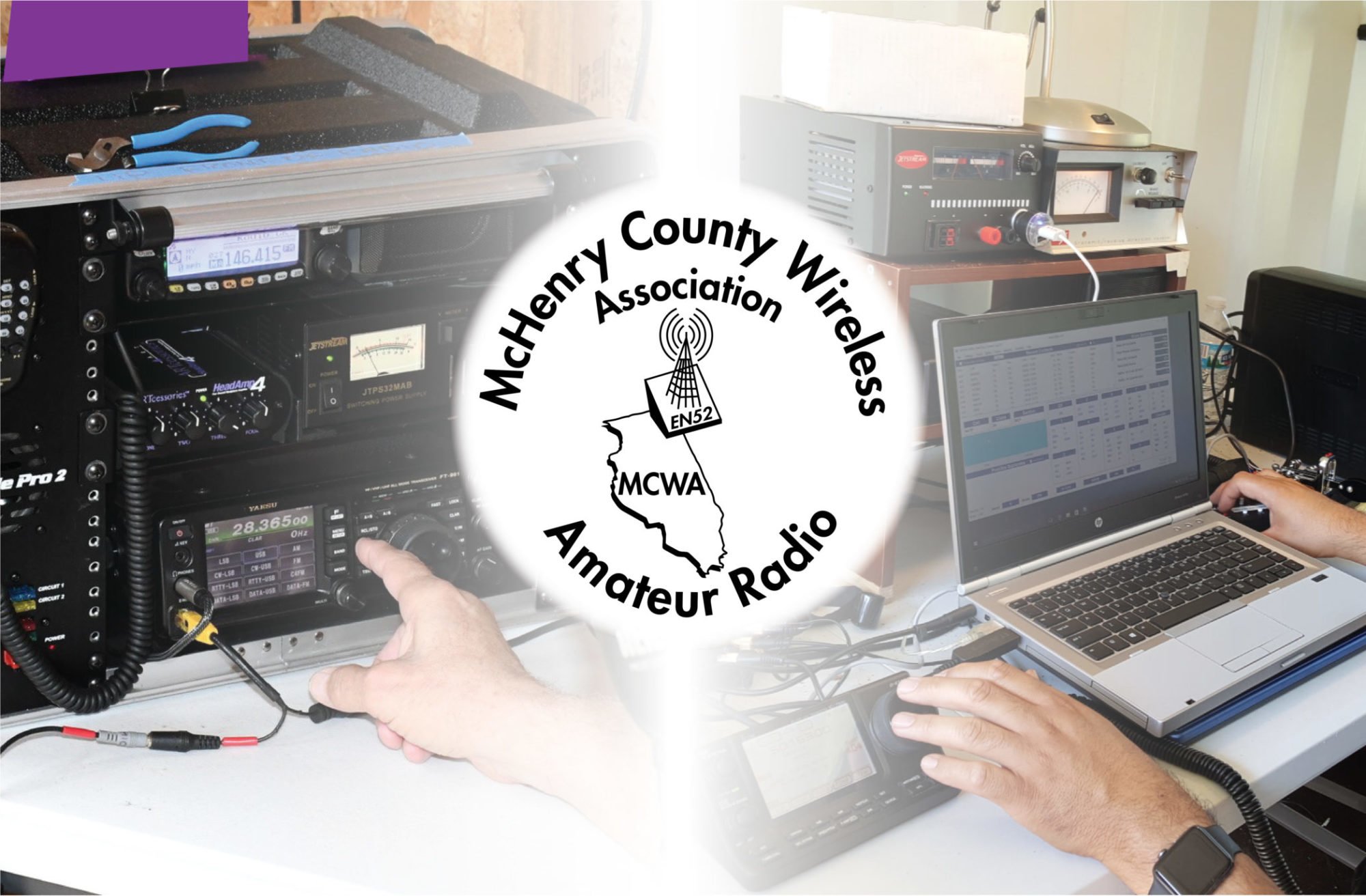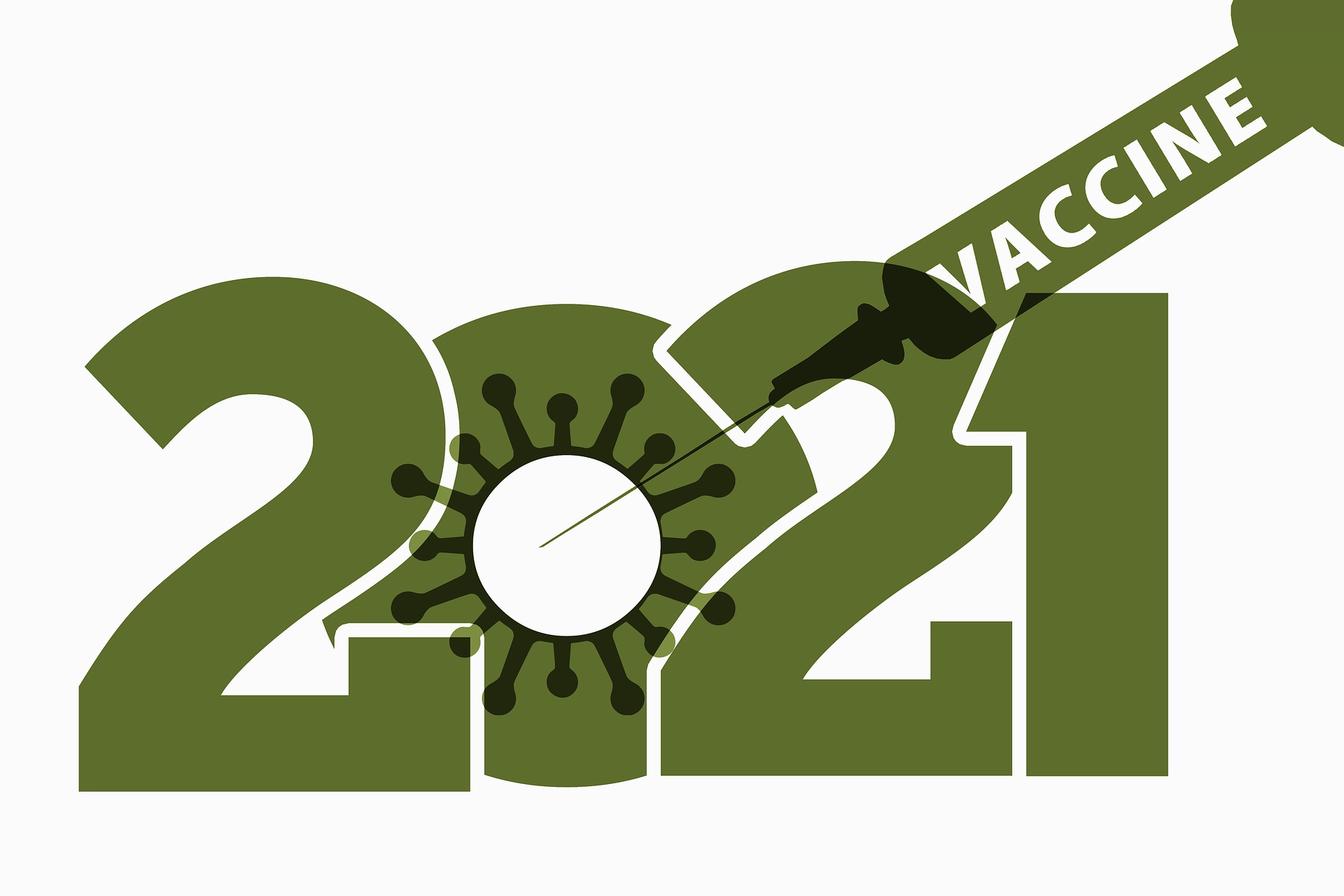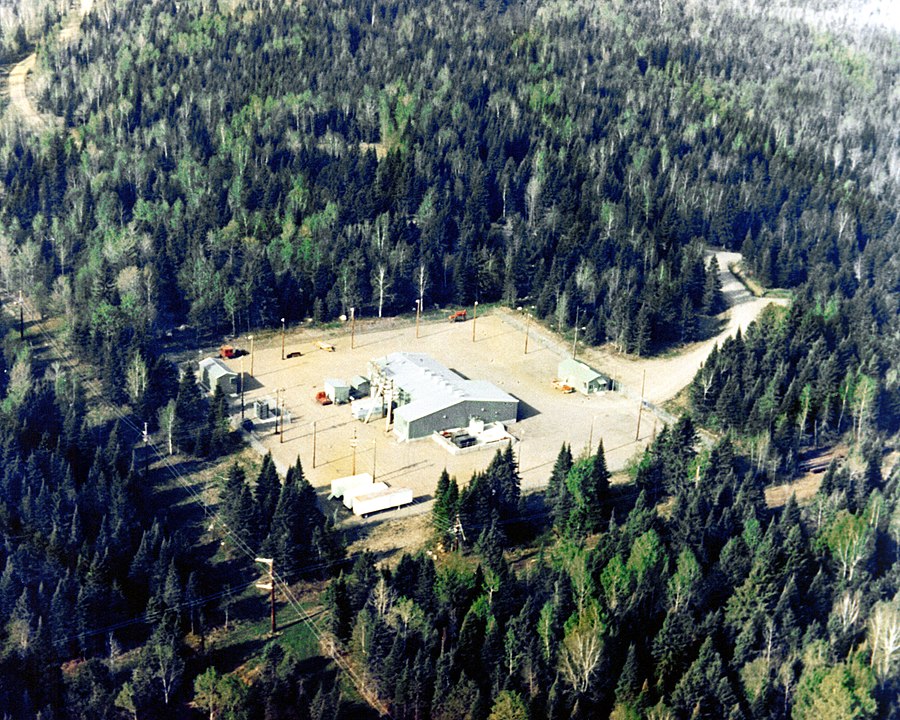On May 23, 2022, Illinois Governor J.B. Pritzker signed a proclamation declaring June as Amateur Radio Month in the State of Illinois.
Amateur Radio Month

McHenry County Wireless Association
On May 23, 2022, Illinois Governor J.B. Pritzker signed a proclamation declaring June as Amateur Radio Month in the State of Illinois.
Amateur Radio Month
The Maker Faire held at College of Lake County last Saturday was very well attended, especially for their first live event. Our exhibit, Morse Code: The “New” old technology, seemed to be a big hit with the faire goers.
Maker Faires attract a variety of people who are interested in learning and creating/making things. There were people of all ages including young families who really seemed to enjoy the exhibit. This is a group of people who know how to wrangle a soldering iron.
Our exhibit had three tables, each depicting a different aspect of digital communications using amateur radio.
Table 1 (Dave, K9AT): Using a IC-705 and Wolf River coil, a typical portable station was shown. Dave also brought a key and Morse decoder for visitors to try out sending Morse Code.
Table 2 (Andy, WB7DKZ and Ralph, WB9ICF): Focused on the history of Morse Code and the tools that you can use to learn it in the 21st century. The table had two MorseInos (thanks to Dan, KD9M and for loaning us his Cricket QRP transceiver), two homebrew Morse Tutors, and examples of QRP CW radios. Visitors enjoyed practicing Morse Code and sending messages to their family members and friends.
Table 3 (Gary, W9GD and Sam, KC9GPY): Showed FT-8 communications to visitors using Gary’s remote station (to ensure that local conditions in the building wouldn’t prevent contacts being made).
The exhibit was well attended and all were kept quite busy explaining Morse Code and amateur radio as well as answering questions.
For those interested in Morse Code, a MCWA Code Practice Oscillator kit was offered to encourage exploration of amateur radio.

Well, it was an improvement
Entering 2021, there was optimism that it would be the year when we would move past the COVID pandemic. The COVID-19 pandemic has disrupted and continues to disrupt our lives and changed the way we live, work, and socialize.
But we have adapted and continue to weather the storm. The club is meeting again person-to-person whenever it is safe to do so. Hybrid meetings, although imperfect, serve to keep our remote members connected and provide an option when we can’t meet in person.
Many hamfests have resumed and the Orlando Hamcation and Hamvention are currently set to happen as of this writing. We are moving in the right direction.
Last year I wrote
“Things will begin to return to normal in 2021 and by this time next year it is our hope that we will have put the pandemic behind us.”
Things have started to return to normal and although we haven’t put the pandemic behind us just yet, we as a nation have come far and it feels like we are turning the corner to the home stretch.
Meetings
The Zoom meetings that were introduced last year continued to allow us to meet as a club. Virtual meetings have a number of advantages including the ability to have remote speakers for our programs. The club began to explore additional ways to use Zoom to bring together our members outside of the monthly meetings.
However, nothing is as good as person-to-person gatherings and people were getting all “Zoomed” out and began to long to meet person-to-person again. When the COVID numbers began decreasing in the late spring and summer, the Board resumed its search for a new meeting space that would be larger and address some of the shortcomings of our old location.
There were many suggestions offered and through the efforts of John Dewey (KA9CAR), the club now meets at Algonquin Township in a space that meets all our requirements now and into the future.
Our first meeting in the building was in August where we had a successful equipment auction. The club has met at the location four times and each month the meeting experience was refined for both the attendees in the room and for those attending via Zoom.
Club highlights
MCWA enjoyed another successful year. Our membership has continued to grow and remains at its highest level ever. Although some members have moved away, have not renew this year, or have become Silent Keys, over twenty new members have joined our ranks in 2021 keeping our club vibrant and strong.
Field Day was an overwhelming success with the K9RN FD team with Dan Larson (KD9M) as coordinator finished sixth nationwide in Class 2A, first place in Illinois and the Central Division!. The ARRL offered again this year for club members operating from their home stations the opportunity to add their scores to the club’s aggregate score.
At the August meeting, our first in the new location, an equipment auction was held for equipment that club no long needed and items that were donated to the club. Auctioneer Mike (WB8BZK) with assistance from Mike (KD9DLL) and Dean (WC9C) were able to auction all the items except for a Drake receiver and transmitter pair that was later sold after the auction.
MCWA members participated in the Sycamore District’s Scout Camporee held at the McHenry County Fairgrounds in Woodstock in October. Scout leaders Doug Tucker (KD9PQI) and Bill Wacaser (KD9WEW) arranged space for an amateur radio demonstration area that included a HF FT-8 “digital texting”, emergency/portable operations, Allstar hotspot, satellite communications, and 6-meter and 2-meter stations. Several hundred scouts had the opportunity to see amateur radio in action, some even coming back for a second helping later in the day.
Also in October, the club recognized outgoing Director Mike Salak (KC9Q) for his two years of service on the Board of Directors and reelected Ralph Iden (WB9ICF) President, Dan Larson (KD9M) Vice President, Gary Kaatz (W9TD) Secretary, and Dean Hettel (WC9C) Treasurer. The club also elected David Whiteside (N9BSA) as Director for a two-year term. Gary Dembski (W9BD) and Mike Metroka (WB8BZK) continue to serve on the Board as Director and Past President respectively.
Losses
Sadly, 2021 also brought the loss of five current and former MCWA members. In January we lost Neil Martin (NM9T) and Steve James (KA9NPT). Later in the year in July, Michael Miller (KA9DFI) and Wasyl Dobrowolskyj (N9CY). Robert Hughes (W9IET) passed away in September. The amateur community also lost John Rice (K9IJ) in June and although John was not a member of MCWA, he was well known by MCWA members.
Looking forward to 2022 (mostly)
At this time last year, there was optimism about 2021. Two vaccines were starting to get rolled out and one could see the light at the end of the tunnel. Things did get better and will continue to get better in 2022. Although 2021 fell short of our expectations, we are getting closer to exiting this long COVID tunnel into the daylight and a return to normalcy.
While the omicron COVID variant is extremely contagious and will definitely impact our lives especially at the beginning of the year, it appears that symptoms are less severe than the delta variant for most. But please remain vigilant so we will be able to enjoy each other’s company going forward.
Developing the “Hams Helping Hams” and other concepts will allow members to pursue special interests (contesting, building, learning CW, etc.) via birds of a feather meeting in person and/or via Zoom.
And, we are in the upswing on the solar cycle, the bands are beginning to open up, and we have good DX to look forward to.

Happy New Year and continue to stay safe.

The ELF Network: The untold story
Copyright (c) 2021 by Ralph Iden, All rights reserved.
Author’s note:
In the late 1960’s, the U.S. Navy proposed Project Sanguine that would use extremely low frequencies (70-80 Hz) for communication. It was an ambitious project requiring a gigantic antenna covering 40% of the state of Wisconsin. The project was scaled down to become Project ELF with two transmitters located in northern Wisconsin at Clam Lake and the northern peninsula of Michigan at Republic. Similar systems were built in Russia (ZEVS/Zeus) and India (INS Kattabomman).
These projects were undertaken under the pretense of communicating with submerged submarines, but there was another purpose even more important. Through Freedom of Information Act (FOIA) requests, we were able to obtain details regarding Project Sanguine and Project ELF that form part of a worldwide communication network.
Although some of the project’s details remain classified to this day, we were able to arrange for an interview with Admiral Sualc Atnas, Retired who was instrumental in the construction and operation of the worldwide ELF network.
R: Thank you for sitting down with me Admiral Atnas to discuss the historical importance of the ELF network. I understand that you won’t be able to discuss some aspects of the program, but I’m not recording this interview, so it wasn’t necessary to come disguised, although it’s a great one: nice red suit, beard and all. Very festive.
SA: No, Ralph. This isn’t a disguise. What would make you say that?
[The Admiral appears somewhat annoyed or disappointed as he scribbles something down in a little notebook that he says he always carries.]
R: My apologies, Admiral. So Project Sanguine and ELF were secret and highly classified projects from the beginning?
SA: Yes. Secrecy was paramount. Of course, it is difficult to hide a project of this size from the public. Our original proposal called for a rectangular grid consisting of over 6,000 miles of cabling and transmitters consuming nearly 800 megawatts of power. When word started leaking out, we had to quickly pivot and provide a plausible explanation for the purpose of the network and not the real purpose.
R: Real purpose? I thought it was fairly well known that the reason for the network was to be able to communicate with our submerged submarine fleet. Are you saying that this is not the primary purpose of the ELF network?
SA: To be sure, communicating with our submarines was and is strategically important, but what was needed most was a better way for our operatives to securely communicate with each other minimizing the risk that our communications would be intercepted or falsified.
R: I had no idea.
SA: Then we were successful.
R: Can you tell me more?
SA: Our network had been using HF successfully for many years, but in the late 60’s more youngsters were getting interested in amateur radio and getting their radio licenses. Once we had this group of inquisitive and motivated young people monitoring the HF bands, the jig was up. Word quickly spread and hams and shortwave listeners around the world cracked the network and began to game the system.
R: Game the system? What system?
SA: Well, at first it was an “early warning system” where the naughty/nice report traffic was sent to our operatives to be relayed to the subject of the report in order to give the subject time to adjust their behavior. As a result many of them did change their behavior which was good for everyone and allowed us to allocate the necessary resources to deliver the right presents to the right people.
R: I had no idea.
SA: You seem to be saying that a lot.
[More scribbling in his notebook.]
R: Okay, so what happened that required a change of plan?
SA: Someone found a way to generate an occasional fake report. That led to a campaign to discredit the naughty/nice system by saying that Santa was a myth that was perpetrated by parents to control their children’s behavior. They wanted to discourage parents and others from filing reports. Then, in a stroke of genius, some very clever young people used their amateur radio skills to send fake “nice” messages directly to the network bypassing our operatives.
R: While I don’t condone that behavior, you must admit it was creative. How did you discover what was happening?
SA: You can imagine that we were overwhelmed by the huge number “nice” ratings. And not just “nice”, but “extremely nice”. We weren’t prepared for that level of niceness and our budget for presents was rapidly being depleted. Our, what are now called, data analysts noticed the change in the data patterns and investigated.
We were able to mostly recover from these false reports and get the appropriate presents to the right youngsters, including lumps of coal and no replacement parts for their radios for the perpetrators.
R: A swift and harsh judgment to be sure. So is this where the ELF network comes in?
SA: Yes. By shifting part of our communications network to the extremely low frequencies, it made it extremely unlikely that inaccurate or false reports could be sent.
R: But isn’t ELF a very slow, low data capacity system?
SA: Yes, that is true, but we were able to pull a few tricks out of the hat and improve the speed of the network to some degree. But it wasn’t necessary to have all the naughty/nice traffic go through ELF, only the parts that ensured that the reports couldn’t be spoofed.
R: You mean things like encryption keys and digital signatures?
SA: We didn’t call them that when we built the system, but you’ve got the idea. I can’t go into a lot of detail about the specifics, but the system did employ Navajo and Elf (the workers in green outfits, not the ELF network) code talkers among other techniques.
R: Was this system used only in the United States?
SA: No. This is a worldwide system and we had similar installations in Russia, India, and a few other locations that I am not at liberty to disclose.
R: You said “this is a worldwide system”. Does that mean that it is in operation today?
SA: Yes. Parts of the original system are still in operation while other parts have received a technological upgrade. We’ve rolled out our own app for Android and iPhone users that allows our operatives to securely file naughty/nice reports to the cloud where they are evaluated and sent to our command center in the North. Everyone can see the realtime naughty/nice scores which allows for immediate feedback to the subject of the report.
R: Thank you very much Admiral for taking time to shed light into aspects of the ELF network that many of us were completely unaware of. Merry Christmas.
SA: You are quite welcome, Ralph. Thank you for inviting me.
[He glances at his notebook again and smiles.]
SA: I’m still old school. 8.73
R: 8.73?
SA: Yes. Your naughty/nice score.
R: What does that score mean? Am I naughty or nice?
SA: Oh, you’ll see. Merry Christmas.
From the West Allis Radio Amateur Club’s website (https://warac.org/swap/index.htm):
The West Allis Radio Amateur Club is, unfortunately, cancelling the Mid-Winter Swapfest event. The 2021 Swapfest cancellation was due to the COVID. Beginning for year 2022, club-related issues force us to abandon the Swapfest despite our best efforts. We understand the planning and effort that our sellers put forth to in order to attend the swapfests and provide interesting and useful goods to sell or swap. We thank all of our sellers and attendees for 48 successful Mid-Winter Swapfests.
We have no specific plans to get back into the swapfest business; however, as we all know, never say never. The Mid-Winter Swapfest has been a remarkable success throughout the years, and we have enjoyed being part of that success and we value the relationships which naturally spun off of the event. We will miss the excitement and action.
If you have questions or comments, please e-mail us at: info@warac.org.
Thank you for your support and understanding.